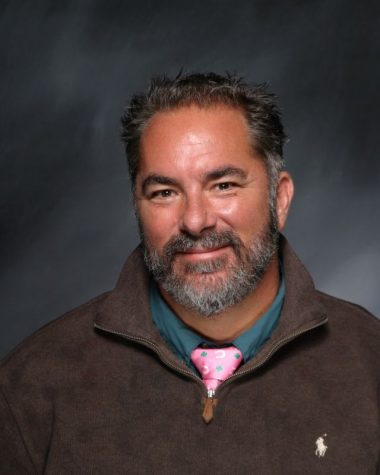Reverbs from the ECHO Chamber — a Q & A with Mr. Pete Schroeder
March 25, 2020

Another in a continuing series of Q & A interviews with Trinity faculty, staff and administrators.
Most everyone knows Trinity teacher and lacrosse team coach Mr. Pete Schroeder. He started the lacrosse program and teaches multiple business-related classes. But many may not know that he grew up in New Jersey around lacrosse. He answered some questions about coaching and the sport.
Q: How would you explain lacrosse to someone who has never been around the sport?
A: Lacrosse has contact similar to hockey, stick work similar to hockey, off-ball offense and defense similar to basketball. It uses a large field similar to soccer and requires hand-eye coordination similar to baseball.
Q: What was the first lacrosse team you coached at any level?
A: Back in 2001 we had one lacrosse team in the entire city. It was with Coach Howe (St. Xavier head coach). He needed assistant coaches and I was one of them. Since I was a goalie, I worked with the goalies.
Q: Was that team a mix of all high school teams in the area?
A: Yes, there were no teams — we had one team. Every single kid that played lacrosse in Louisville was on that team.
Q: What was the name of that team?
A: Louisville Lacrosse. It was grades 9-12 and about 60 kids.
Q: What is your favorite level to coach at?
A: Probably just high school varsity. I had a good time coaching with the pros and semi-pros, and travel ball, but high school varsity is my favorite level to coach.
Q: Who were some of the biggest names you have coached?
A: Anthony Kelly and Greg Bice, who were both All-Stars in the MLL. Chazz Woodson was another guy I coached one year. Mike McLellan is another; he scored 50 goals in the NLL one year.
Q: Why do you think lacrosse is growing so fast?
A: I think, honestly, football kind of dropped the ball in terms of concussions. At the same time lacrosse has been tightening up their contact rules, trying to make it safer, which is good. A lot of kids are attracted to the physicality of it, but also just the game itself.
Q: How has the game evolved, not only in the rules but the game in general?
A: The stick work, the sticks themselves have changed. You used to be able to throw a check, and the ball would hit the ground. The game was really physical back then because the ball was on the ground. Once the heads were changed to be offset, it turned to be more of a ballcarrier’s game — harder to get the ball out of the stick, and offensive players could now shoot the ball harder.
With that the rules have changed a little bit with things like cross checking becoming somewhat legal. The other thing that has happened is the physicality has been dialed back. Lastly, the stick work is a lot better than it used to be.
Q: How has the talent level grown through the years, especially at the high school level?
A: It used to be so many kids that came in had never played the game before. Now we get kids that have been playing since second grade. They are coming in with six, seven, eight years of experience. So we have a lot more experienced players now than we had when we started. That’s raised the level of play here and in the state.
Q: Do you think talent level will ever start to even out away from historic powerhouse schools?
A: If we can get the game into the elementary schools. I think a lot of the elementary schools and middle schools have gym teachers that never played and have never been exposed to it. But now that we have had the game in the area for a generation, we will have more who will add it to the curriculum.

